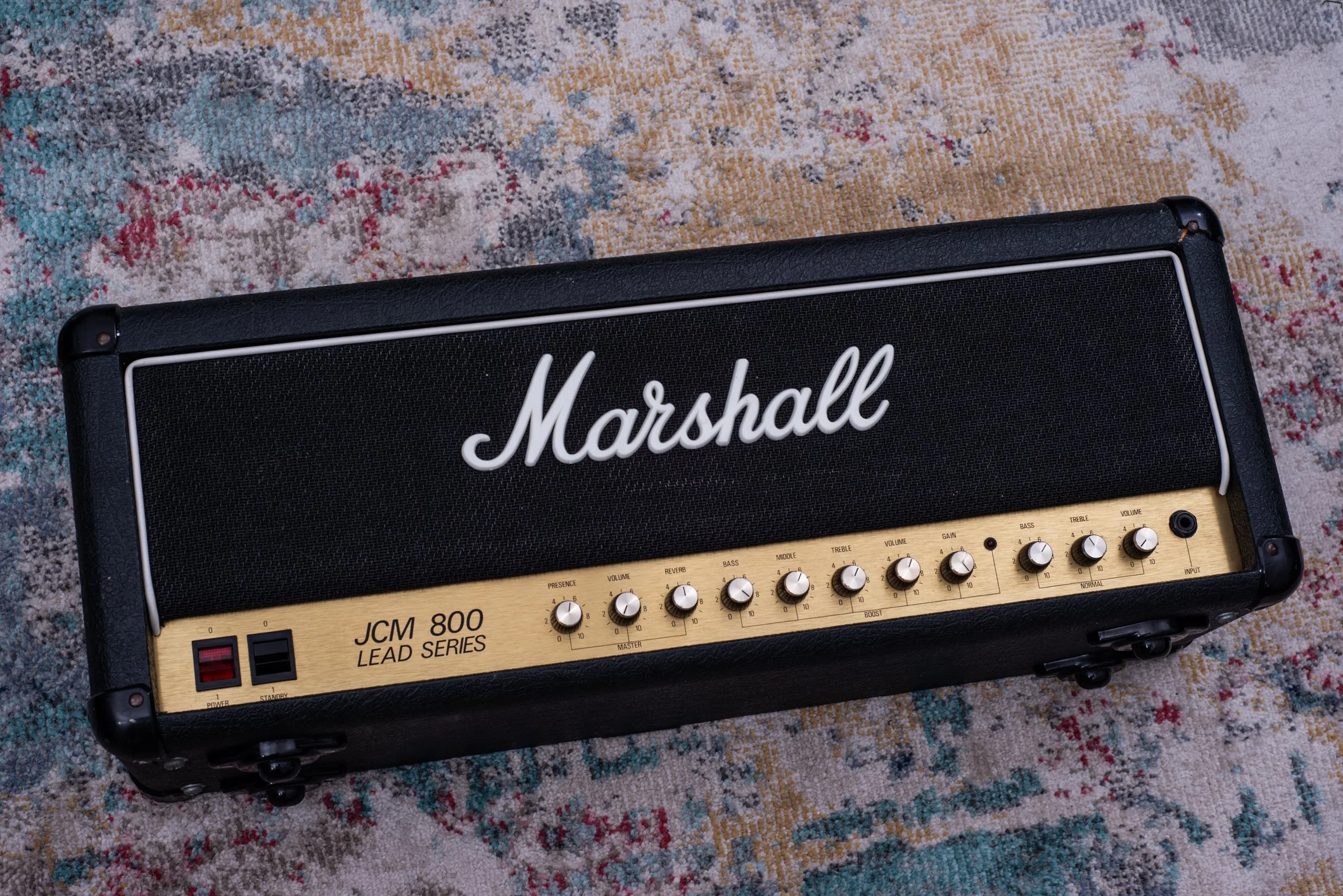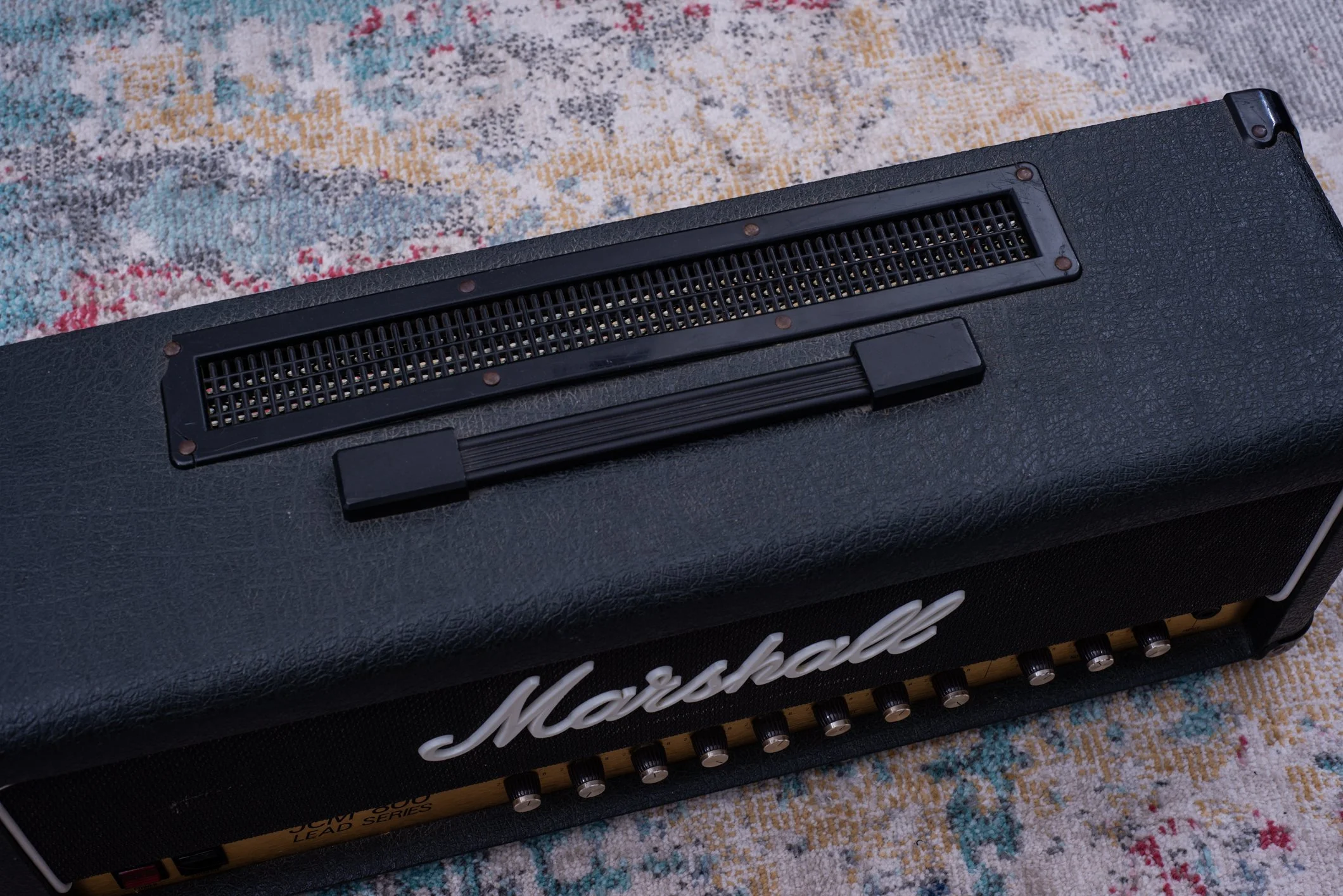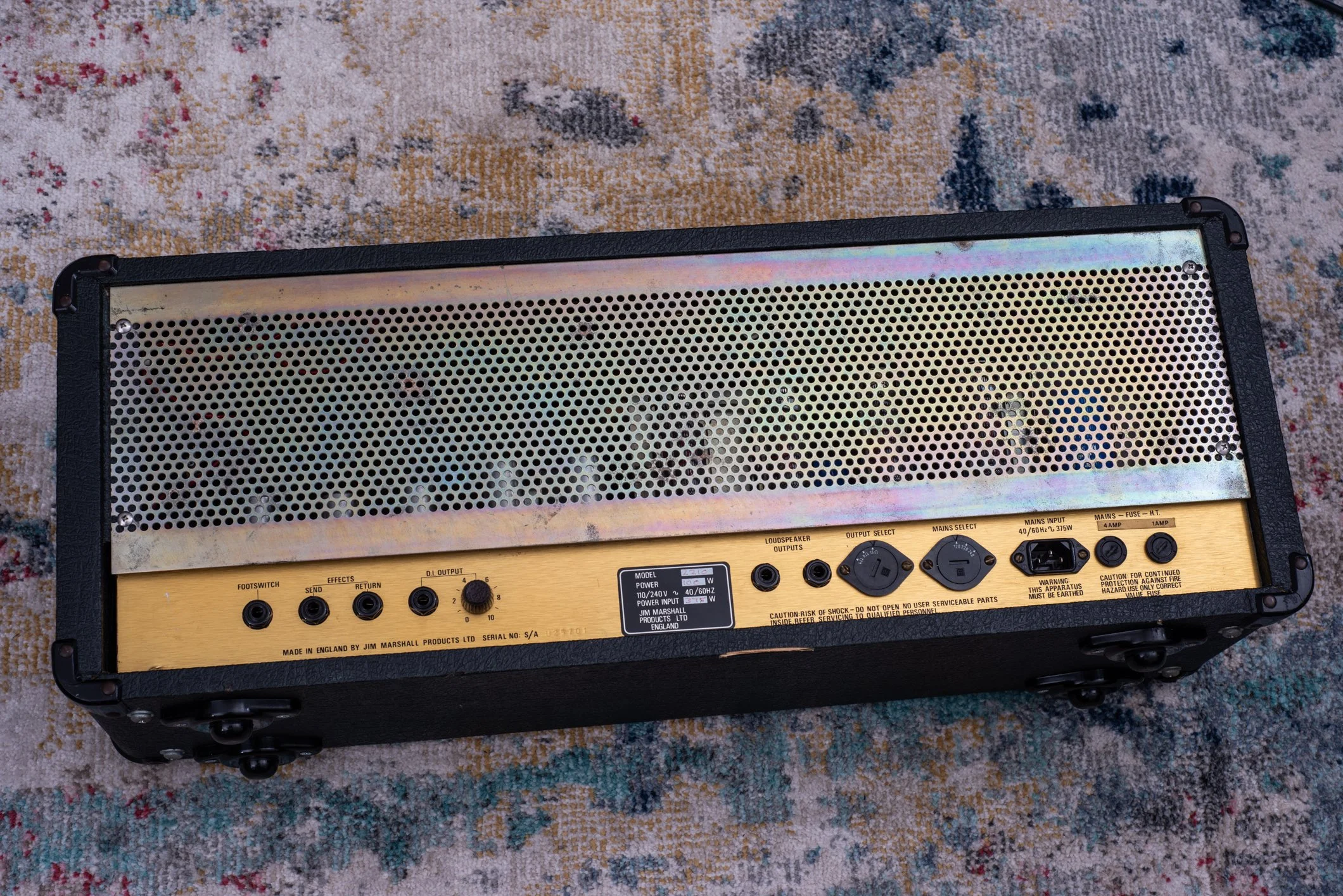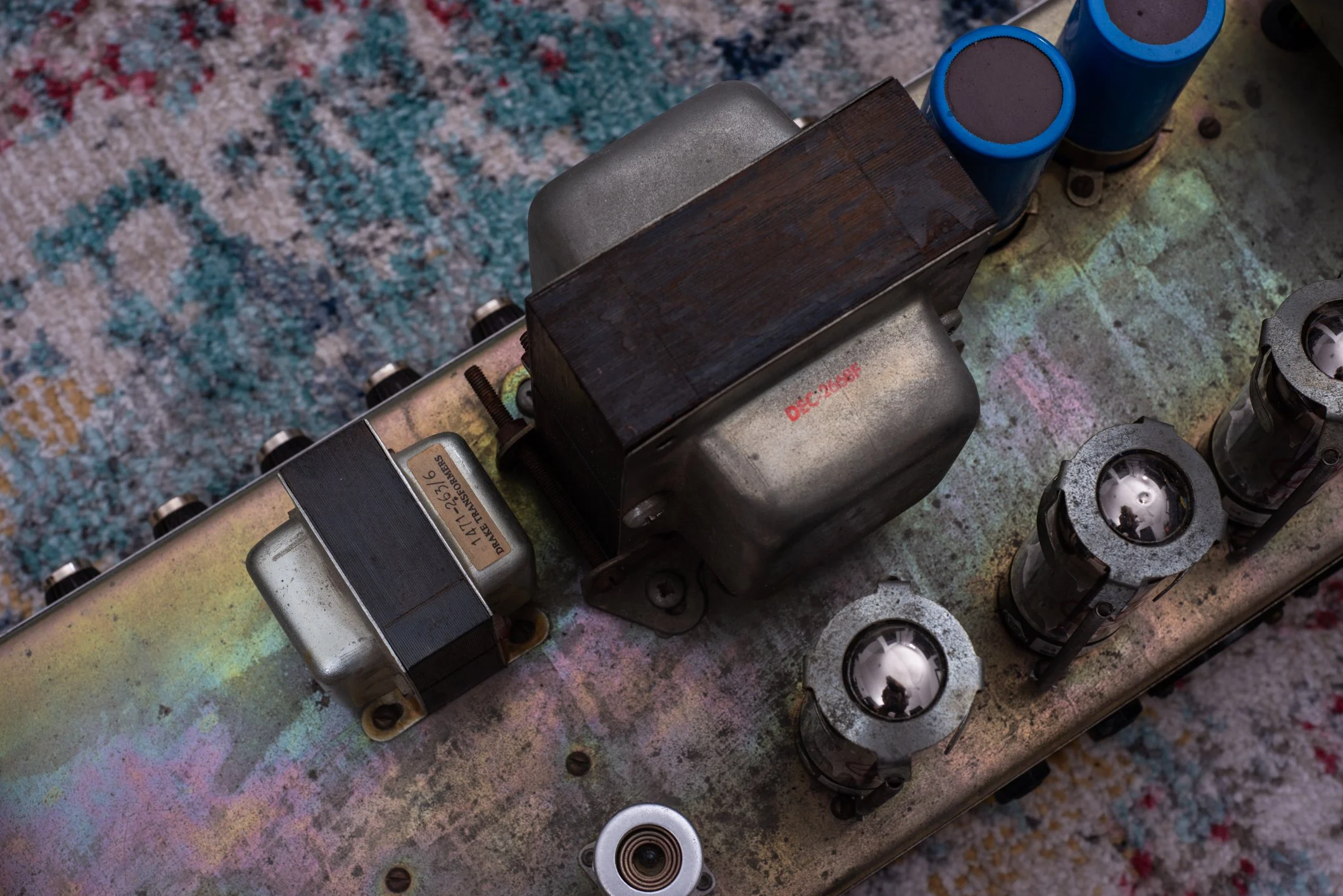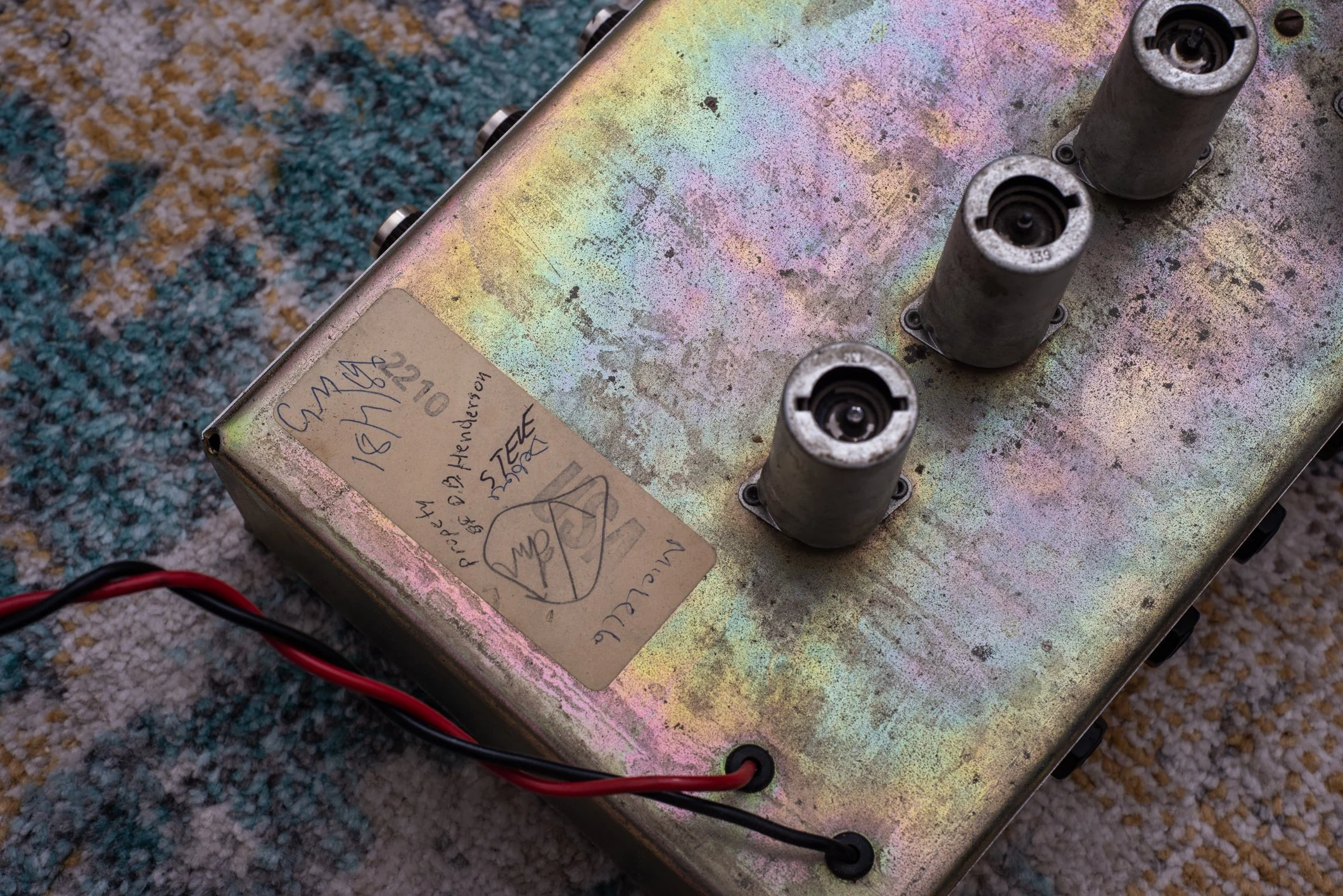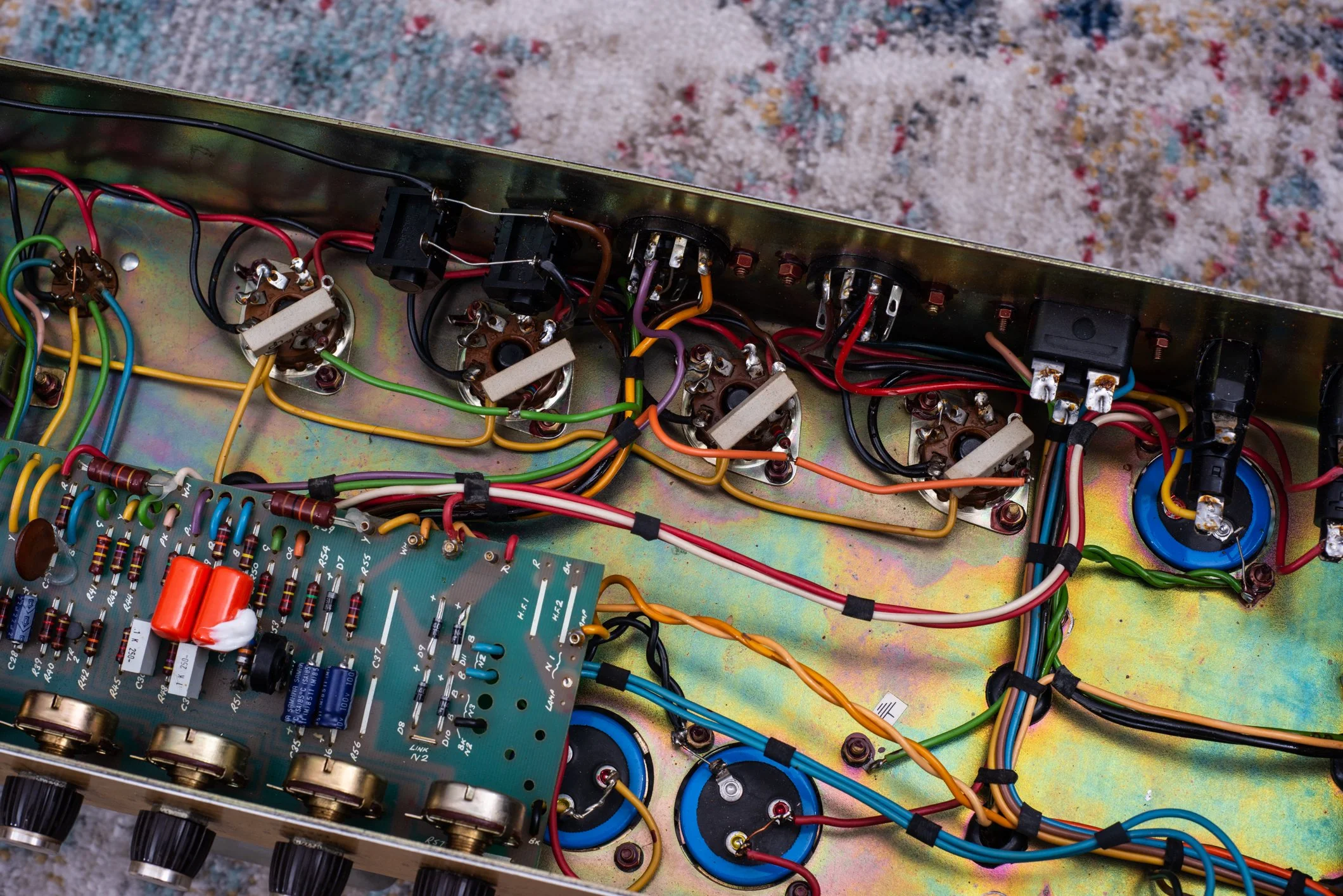1986 Marshall JCM800 2210 Split Channel
Specs
2 Channels
100w Output
Later revision circuit
4x EL34 Power Tubes
5x 12AX7 Preamp tubes
V1A: Input gain stage for both channels
V1B: Boost channel gain stage
V2A+B: Clean Channel Gain stages
V3A: Boost channel gain stage
V3B: Reverb send
V4A: Effects loop return
V4B: Reverb return
V5A+B: Phase inverter
Serial effects loop
Direct line output
Accutronics spring reverb
Dagnall Transformers + choke
Channel volumes + master volume
Overview
This is my favorite Marshall amplifier, and one that was frequently disliked up until recently, where the opinion online seems to have turned around on them. Essentially, it’s a two-channel amplifier, one of the earliest channel switching amps ever designed, and it went through 3 major revisions across its production run from 1982-1990.
The first revision was made from 1982-1984, but I have seen some later 1984 units with the second revision. Externally, they are indistinguishable, so if you are searching for a specific revision, it’s important to ask for the serial number to help narrow it down, or better yet, pull the V2 tube and this will tell you which amp you have - if the clean channel goes quiet, but the boost channel works, you have a later revision amp. If you lose the boost channel, you have the earliest revision. The final revision is somewhere between 1987-1990, but just like the earlier version, models from 1987 likely can be from either revision, but it’s not as easy to tell the difference and the official schematics lack the information. Usually they are differentiated by a noticeable amount of more gain on the boost channel in the very late version, but otherwise there is not a huge difference. Early revisions on the other hand have a very different gain structure, and a host of problems like channel bleed (hearing the normal channel while you play the boost channel) and a voicing that doesn’t satisfy either classic Marshall enthusiasts or vintage high-gain fans, putting it in kind of an odd spot. I still would like to get my hands on an early revision, but it’s mostly for the purpose of doing a comparison clip with this amp - I have a lot of time with a 1982 model with my own guitars and speakers and I already know I’m not a big fan of the tone.
For the time, this was a feature heavy amp, with two switchable channels, and effects loop, a direct line out, as well as a long spring reverb. The most divisive piece of this amp however is the diode clipping, which is used to increase the amount of gain available on the boost channel. At the time, adding diodes across the master volume (“Jose” style) was an extremely popular modification, so Marshall simply provided an amp that offered the “modded Marshall” sound straight from the factory. The difference is that you had to be happy with the voicing of this amp - which I am - but I’m sure the reason it wasn’t so well received is that the type of player to have their amp modified is going to have a lot of input on the exact voicing they get, to their taste. On the other hand, players who just wanted to buy a Marshall that sounded like a standard one wouldn’t be happy with this amp compared to the single channel heads like the 2203 or 2204, but may have felt forced into it because they needed a clean channel, or an effects loop. The diodes do add a certain character to the gain, a gritty growl which I really enjoy, but this amp’s voice is much darker than a 2203 so it sacrifices the “kerrang” of bright mid-gain tones that amp can do for a more polished sound useful for styles popular at the time, like hair metal.
The normal channel is a classic Marshall sound however, but very minimal on controls - just a two-band EQ and volume control, though you can tame it with the master volume as well. Both channels have 3 tube gain stages, but the normal channel has no clipping diodes in the signal path. The boost channel is high gain, even in a modern sense, and especially with a boost and maybe a delay in the loop is one of my all time favorite tones. Interestingly, this 2210 is noticeably darker than my 2205 at the same settings, which is why I usually run this amp with the treble at 6 or 7, but on the 2205 I set it to only 4, but they otherwise have almost the same voicing. They are both from the same revision, although there could be some component variability, and my 2205 is loaded with a pair of 6550 power tubes. This 2210 has a quad of EL34’s, but I should mention also that this amp would’ve come originally with a quad of 6550’s as well, and was likely modified at a later date to bias for EL34’s. EL34’s were not as available in the later 80s, forcing Marshall to pursue different options for factory tubes, and at the time the 6550/KT88 high gain metal amp thing wasn’t like it is today - hard to believe 6550’s were a budget alternative power tube when looking at current prices (6550’s are currently almost double the price of EL34’s at the time of writing in 2023). This extends even into the 90s, but I’ll talk about that on the JCM900 pages.
This amp was damaged in shipping and the original accutronics spring reverb tank snapped a spring, so I replaced it with a modern MOD brand equivalent. I never liked the stock reverb much on my 2205 (same tank), but this new tank sounds much better to me - it’s more lush and full sounding and the tail isn’t too short as I felt with the factory tank. I wouldn’t have upgraded it just for fun, but since I had to replace the tank anyway this was a worthwhile upgrade, considering I can’t acquire the original accutronics tanks anymore.
If you are into the modded Marshall sound and enjoy amps like Friedmans, Splawns, Landry, and countless others, I’d really recommend you give one of these a try. Prices have gone up drastically in recent years because the secret is out now (coupled with a general increase in prices all around of course), but they are still a relative bargain compared to vintage 2203’s or new BE100’s, and you might find the tone to be even better than those amps, depending on your application.
